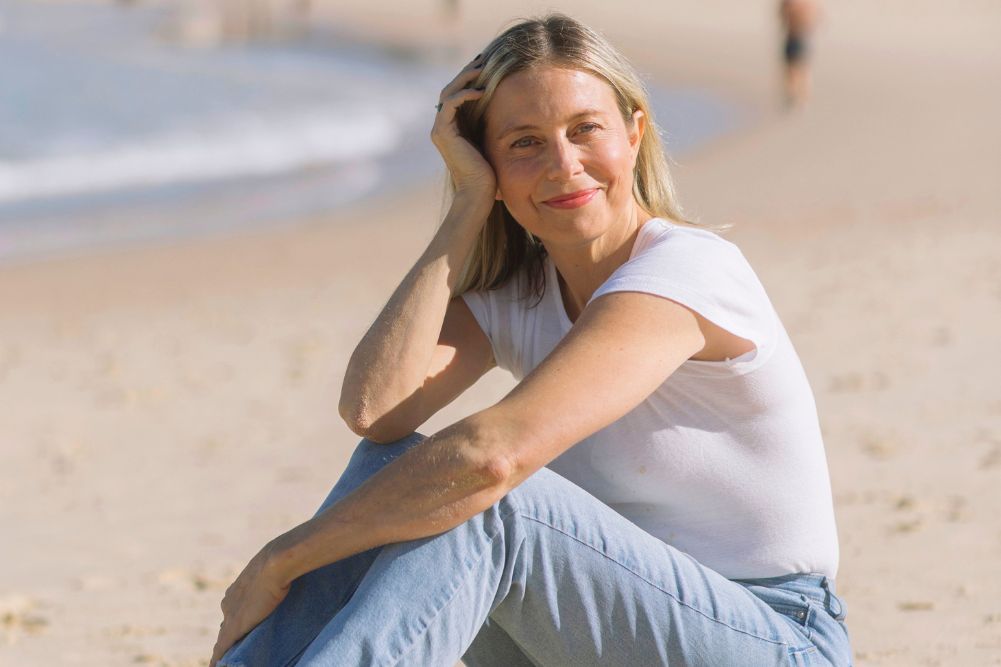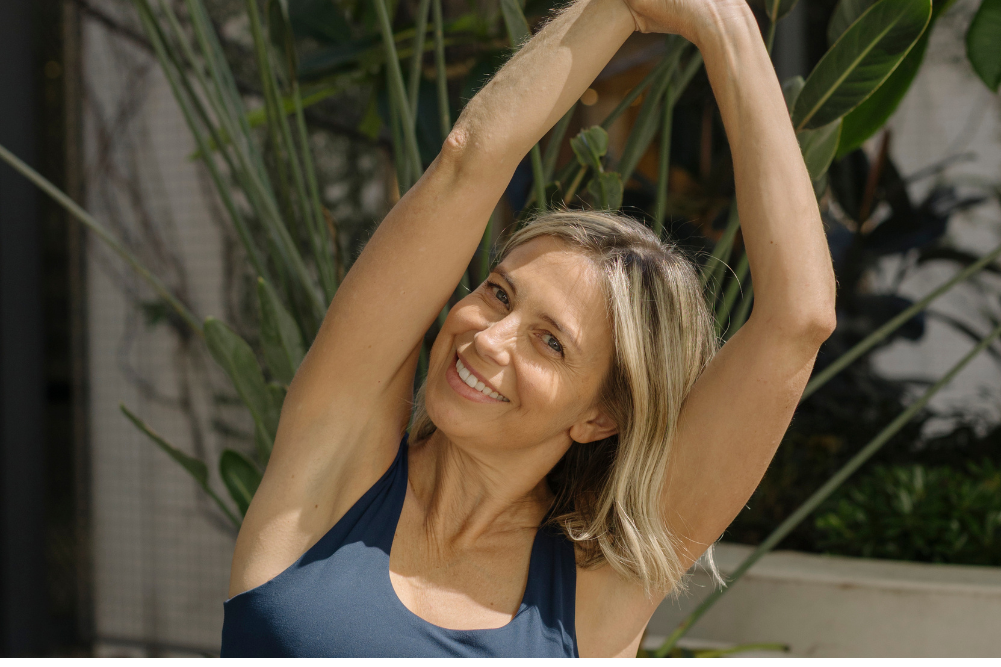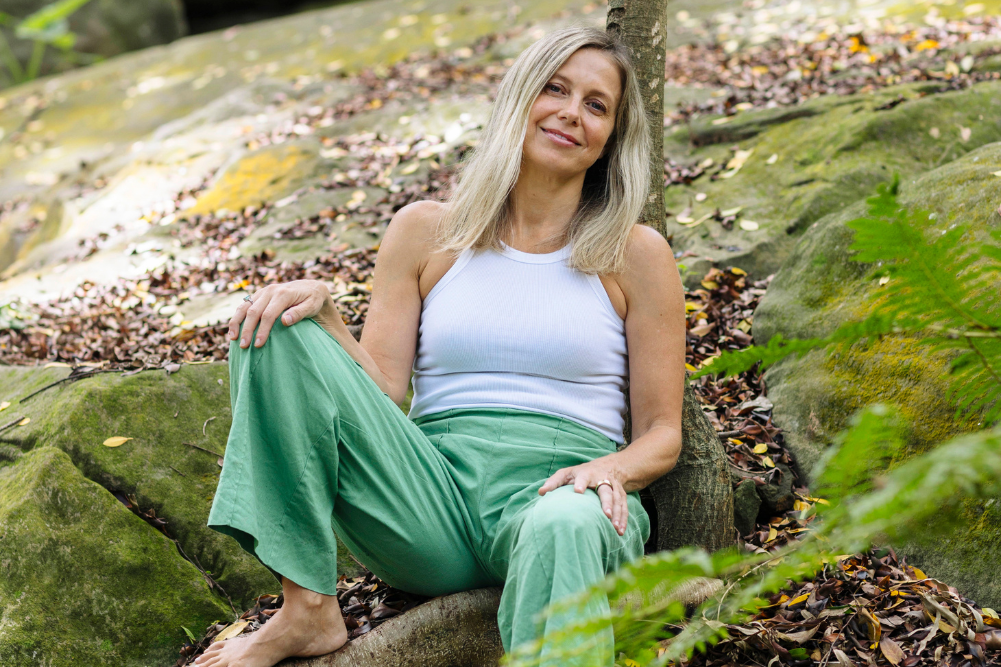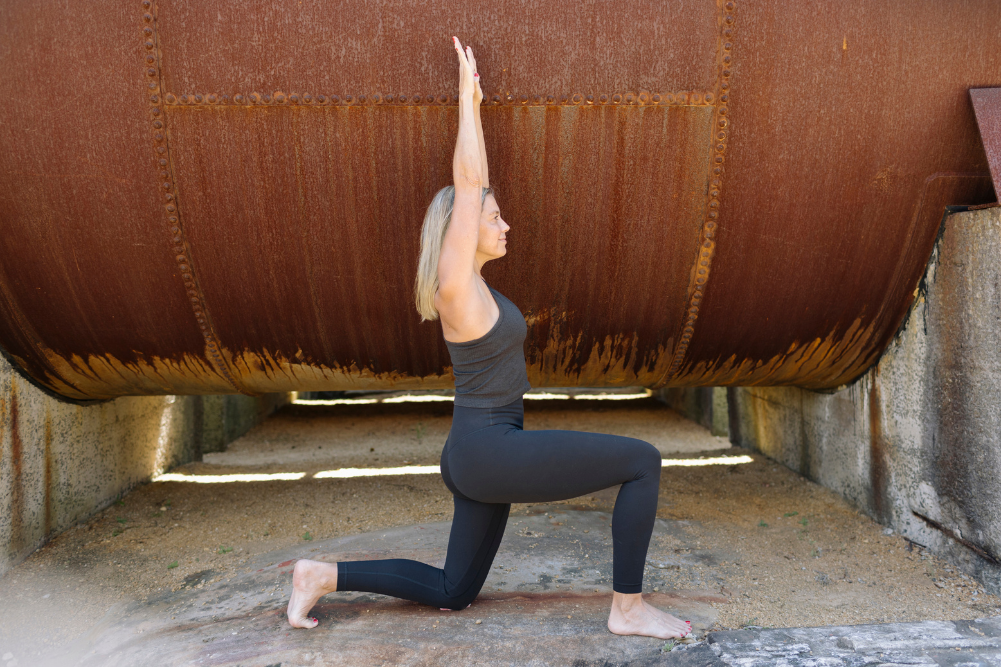Discover the anatomy of yoga asana
The first-century Indian sage and scholar Patanjali wrote, “sthira sukham asanam” which roughly translates to “asana is a steady, comfortable posture.” A simple posture that could be held for an extended period with effortless ease was considered the most important factor in yoga. The more dynamic, contemporary way of practising asana is different — but wonderful at enhancing mind-body awareness as a wealth of information lies within each and every posture.
If, however, you find that the more yoga classes you go to, the more feelings of vulnerability or unpleasant sensations arise, you could be performing postures with a lack of intention or attention. This can lead you to feeling disillusioned by your practice or like you’re doing something wrong.
When you pay attention to your individual anatomy, you will strengthen your intuition, allowing common sense to guide you.
Holding the intention of balancing effort and ease gives you the opportunity to grow from your foundations and discover exactly what to do — or not do — in order to find this steady, comfortable posture that we call “asana”. When you pay attention to your individual anatomy, you will strengthen your intuition, allowing common sense to guide you in finding effective alignment patterns in your asana practice.
Ray Long, in The Key Muscles of Yoga, likens the physical practice of yoga to art, saying: “The body is the canvas and the asanas are the art we create.” To enjoy a more creative experience when you’re flowing through postures, it helps to educate yourself to recognise the ways in which your body finds a sense of grounding.
The questions that follow are designed to help you carefully progress your practice to become more established in asana. The intention is to avoid overexertion while finding stability and ease in each pose.
What is the intention of this asana?
Have a conscious intention in each physical posture. Above all, ask yourself: “What do I want to gain from this pose?” It could be a standing, sitting or supine pose; a forward bend, twist or a backbend; it could work the abdominal and lumbar region, the legs or the upper body — but essentially you need to understand why you are doing it.
To go deeply inside yourself, as is the goal of any yoga practice, there needs to be a sense of grace as you journey within the physical body. A regular practice guides you to a deeper appreciation of the power of asana, which, in turn, arouses your ability to practise with a greater level of attention.
By paying attention to the intentions of each asana, you will begin to understand the anatomical shifts required to get there and adapt your postures in an appropriate way. Yoga educator Leslie Kaminoff writes: “Once there, we will not only understand our anatomy but also directly experience the reality that gives rise to the core concepts of yoga”.
How do I obtain this asana?
Most yoga classes are taught as instructional classes, in which students are guided through a sequence — one pose at a time, often with a theme on a specific direction of movement, for example backbends. This includes instruction on modifications and how to work in each pose as the sequence progresses. Everyone is different and, as Susi Hately, author of Anatomy and Asana: Preventing Yoga Injuries, states, “It isn’t surprising that a whole number of cues and modifications are available … all with the intention of less pain, better movement and more freedom”.
To go deeply inside yourself, as is the goal of any yoga practice, there needs to be a sense of grace as you journey within the physical body.
Regardless of different body types and past/present injuries, there are basic rules of anatomy for attaining any direction of movement. Let’s take, for example, rising up into a backbend.
According to Melanie Cooper, author of Teaching Yoga, Adjusting Asana, “Backbending with ease and grace requires that the hip flexors (front of the hips), shoulders and the whole of the front body are flexible and the muscles in the back are strong.” There is tone to the back body in backbends, agrees Hately, particularly the glutes, as in setubandhasana (bridge pose) where the hips are lifted away from the floor. “The movement is a hip extension, and the glutes enable hip extension to occur,” she says.
When you understand how to balance the extension or stretch element of each pose with the strength and support required for that motion, you can enter a state of focused concentration. This focus acts as a vehicle towards meditation during your asana practice.
Where is the ease and stability in this asana?
If you are new to yoga asana, you won’t feel at all at ease to begin with, whichever way you’re asked to position your body. But, if you commit to the process of finding ease and stability, rather than a particular position or shape, slowly the body will settle into whatever shape it is given.
The idea behind traditional yoga asanas is that the postures were adapted to suit the condition of the individual to help them with duhkha (suffering) at the level of both the physical body and at the psycho-emotional level. Therefore, if you experience any physical or mental disturbances, any stiffness or tension, a posture must be adjusted in some way.
The clearer you become about your needs and your inner toolkit for finding ease and stability, as well as how to adapt and apply ease and stability to your asanas, the more effective your practice will become.
How can I fine-tune this asana?
Long-time yoga teacher Judith Lasater, with her influential work on anatomy and kinesiology, emphasises the importance of applying your intuitive knowledge in practising asana. An intelligent awareness allows you to be present in your yoga practice, therefore enabling you to experience any posture more deeply.
If you commit to the process of finding ease and stability, rather than a particular position or shape, slowly the body will settle into whatever shape it is given.
Whether you already have a home practice or not, you will benefit from taking the time to fine-tune your asanas in your own space. “An experienced practitioner is one who has his or her own home practice and only comes to class as a way to refine or get fresh info or be inspired,” Lasater notes.
You may find that, when you go to class, your teacher uses their hands to enable you to get deeper into a pose. Rather than just allowing yourself to be moulded into shape when you receive a physical adjustment, see if you can figure out what fine-tuning the teacher intends with that adjustment. A good assist can deepen your understanding of your postural alignment and fine-tune your sense of the asana. Receiving an adjustment from a knowing practitioner allows you to truly be in the moment and focus on the present through the nurturing, healing quality of touch.
How can I feel greater stability in this asana?
The foundation of a healthy approach to asana practice rests on finding stability through solid grounding in each posture. Maintaining an upright seated position (and also an upright standing position) requires stability of the torso, including the core group of muscles that sit deep within the abs and back and attach to the spine and pelvis. These muscles form the basis of stability and are also the source of all physical movement.
Improving core stability is key to finding overall stability in your poses. Core stability also makes your movement patterns more efficient. Why is this important? According to Susi Hately, efficient movement patterns contribute to “less pain, effortless effort, better energy management, more authenticity and great opportunity to do more complex movements and activities”.
How can I feel more ease in this asana?
Learning about the anatomy of a pose is useful for understanding how to find ease. Take downward-facing dog or plank pose, for example, where there is frequently tension or discomfort in the wrists. When you keep a soft bend in the elbows (avoiding a hyperextension of the joint), you can maintain the strength in the shoulders and upper arms.
The more physical practice you do, the more you’ll start to recognise the fine line between practising asana in a way that creates good muscle tone and flexibility, and practising in a way that creates muscular tension and ultimately stiffness.
Remember, one size does not fit all. Human bodies are diverse and, where some postures will come naturally, others won’t feel so natural. You’ll want to have a realistic approach to those you find challenging and work towards them carefully without creating tension.
Below are postural pointers to help you find stability and ease in six common asanas.
Downward-facing dog pose (adho mukha svanasana)
Points of intention: This posture relieves tiredness, returns energy to the body-mind and is exhilarating.
Points of attention: Tight hamstrings and hyper-extended elbows.
Bend the knees to release the hamstrings and free the lower back. Perhaps bend one knee and then the other, opposite heels coming towards the mat.
Keep your palms down on the mat (so the hands don’t move) and carefully turn your arms outwards, so your hands and shoulders stay parallel as they rotate externally. Draw your triceps back towards your thighs to further release locked elbows. Have an awareness of pressing down with each of the fingers — particularly the thumb and pinkie fingers — to take the pressure away from the wrists.
Mountain pose (tadasana)
Points of intention: This posture tones the whole body and yields an alert body-mind.
Points of attention: Abdominal tone and foot positioning.
There is a difference between a naturally rounded abdomen with toned muscles and one that is tightly pulled in and contracted. When the abdominal muscles are held in a hard and contracted way, they can restrict the organs of breathing and digestion. A naturally toned abdomen is not tense, yet it is firm enough to provide support for the abdominal organs and spine.
Many people stand with their heels close together and their toes turned out in mountain pose, which means there is an external rotation of the hips and/or ankles. Look down at your feet and put them in a more parallel position, paying attention to if and how this shifts your weight distribution. Root down with your feet and, from that yielding, allow a rebounding of energy to rise up through your body as you stand erect and alert with the crown of your head pointing towards the sky.
Big toe pose (padangusthasana)
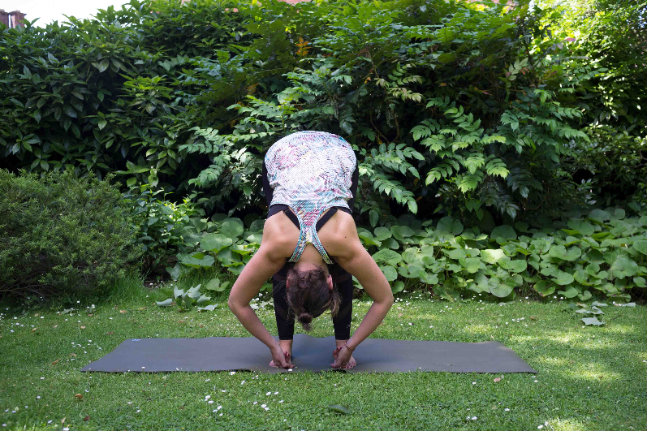
Points of intention: This posture tones the abdomen, aids digestion and stretches the spine.
Points of attention: Tense upper body and lack of abdominal tone.
Relax your head and neck and soften the shoulders by letting them slide away from your ears. You may find bending your elbows out to the sides helps to bring you closer to your legs, but remember to keep your head and neck relaxed.
Scoop the lower belly in as you fold forward into the pose and also as you come back up to standing. Keep your lower belly lifting up and in, and draw the navel back towards the spine while you’re in it. Keep pushing your toes into the floor, aiming your chest toward your knees and possibly straightening your legs — if your body allows it.
Bow pose (dhanurasana)

Points of intention: This posture tones the abdominal organs. It keeps the spine supple and brings vitality, energy and lightness.
Points of attention: Nutation of S1 vertebra.
When you perform a backbend, you perform an active spinal extension, but for a spinal extension to be healthy it must be accompanied by “nutation”. Nutation is where the top part of the sacrum moves down and forward relative to the pelvis being fixed in place.
You can consciously assist nutation by deliberately pressing S1 (the highest sacral vertebra) into the floor and imagining the rest of your body lifting upward. In other words, as you kick up with your feet to lift your chest and knees, you want to feel as though you’re pressing down with the tops of the hip bones.
Variation: Lie belly-down with your arms in any comfortable position and bend your knees so your feet point towards the sky. You will feel the pelvis tilt slightly anteriorly, which is passive nutation.
Intense stretch to the east pose (purvottanasana)

Points of intention: This posture is very beneficial to those who suffer from slipped disc or backache.
Points of attention: Contraction of the glutes and the effect of opposites.
The gluteus muscles contract in this asana in order to lift the hips up. Other prime muscles involved are the quadriceps, erector spinae and triceps, which work in combination with pressing down into the balls of the feet and pointing your toes towards the floor to lift the hips up more.
As the glutes and the erector spinae muscles contract in this pose, the muscles of the front of the torso get stretched, and so tightness in the abdominals will limit the depth of your backbend. Similarly, as the back of the shoulders contract for the upper arm extension, any tightness across the chest will limit the degree of that extension and, if you drop your head back, the back of the neck contracts while the front of the neck stretches, again depending on the flexibility of those muscles.
Bridge pose (setubhandasana)
Points of intention: This pose relieves backache, strengthens the back muscles and helps rejuvenate the organs of the pelvis.
Points of attention: Stretching the hip flexors and opening the diaphragm.
Lift up into the pose slowly on an inhale, rolling up your pelvis, lower back, middle back and then upper back. If you interlink your fingers behind your back, it may feel good to really press down with the underside of the arms to lift the hips up more.
Lift the ribs up so that the diaphragm opens. Raise the chest and expand it.




